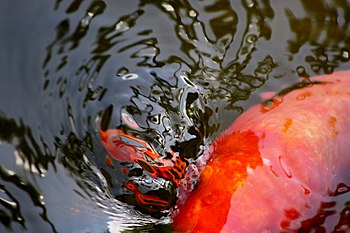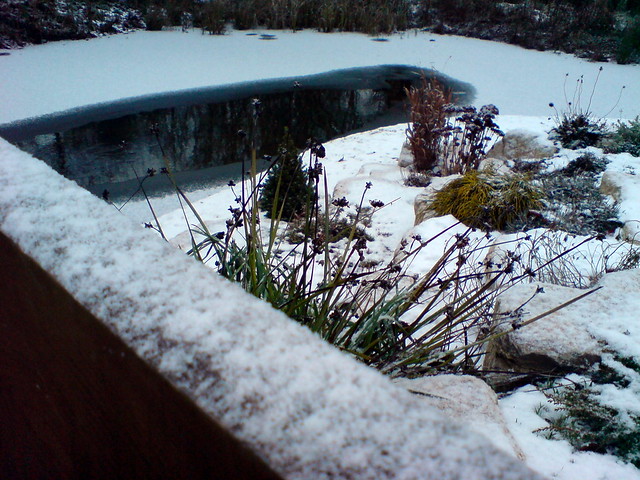Koi pond’s popularity are on the rise, and the reasons are obvious. Who would not want living creatures as a part of their garden? However, Koi keeping should not be taken lightly. Koi, like any other animal, require time and money to maintain. The majority of first time Koi owners fail because they get the idea that keeping Koi is easy in some way. Do not let this discourage you though, as educating yourself will greatly improve your chances of succeeding.
popularity are on the rise, and the reasons are obvious. Who would not want living creatures as a part of their garden? However, Koi keeping should not be taken lightly. Koi, like any other animal, require time and money to maintain. The majority of first time Koi owners fail because they get the idea that keeping Koi is easy in some way. Do not let this discourage you though, as educating yourself will greatly improve your chances of succeeding.
 |
| Koi fish cliche (abstract) (Photo credit: Wikipedia) |
It is important for you to learn all you can BEFORE you begin obtaining the things you need for Koi keeping. This way, you will not slip up and have to replace anything that you have already done or bought. Planning ahead will not only save your money, but it will potentially save your sanity as well.
It is important to learn the information for yourself rather then relying on other sources. People such as your product dealer and pond builder will have limited knowledge, but should not be trusted for a reliable source, as they are selling products, and may be bias. Plus, once you are at home with your Koi, your product dealer or pond builder may not be available to help you in the event of a problem.
Your Pond
Before ever buying Koi, you must create a proper habitat for them. This is where information from your pond builder and supplier will come in handy. However, you should not rely on the opinions of just one person. It may be a god idea to do research on your own, before you go to purchase the materials needed for you pond. Because of it’s popularity, an unlimited supply of resources can be found on the topic of Koi keeping. Visit your local library, fishery center, or research online. There are quite a few things needed to sustain a habitable pond.
When it comes to pond size, the bigger is always better. Koi have a habit of growing rather fast, so you have to consider pond size at the same time you are considering how many Koi you are going to put it in.
You filtration system is extremely important. There are 2 types of filtration, mechanical and biological. mechanical filtration relives the pond of solids such as dead algae, insects, and Koi wastes. It is important to have enough filtration to sustain the size of the pond, and the amount and size of your Koi. Biological filtration causes a nitrogen cycle, which is what removes dissolved wastes from your pond. Without biological filtration, built up waste will turn into ammonia and kill your Koi within just a few days.
Another consideration is the water quality. It is sometimes said that having Koi is literally just a side effect of having the proper water quality. To keep your Koi alive, you must have the proper knowledge on how to maintain your water quality.
Buying Koi
There are potentially thousands of different types of Koi , with about 20 different popular versions. Koi are popular because of their beautiful colors and patterns.
, with about 20 different popular versions. Koi are popular because of their beautiful colors and patterns.
Your pond should be complete before you even look into buying your Koi. The size and amount of Koi you buy should be highly based on your pond. Be careful, overstocking will cause problems right away with you pond, potentially killing many of the Koi you purchase, causing you to loose time and money.
Most fish owners understand that most fish will only grow to the size of their enclosure. Koi, unlike other fish, will grow until they are the size of their specific type. You must be able to accommodate the amount of fish you purchase in the future.






